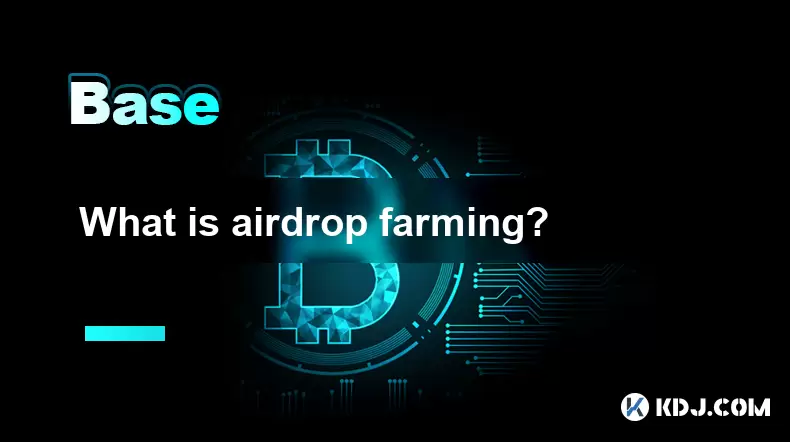-
 Bitcoin
Bitcoin $117800
0.05% -
 Ethereum
Ethereum $3542
-1.68% -
 XRP
XRP $3.435
-0.41% -
 Tether USDt
Tether USDt $1.000
-0.02% -
 BNB
BNB $729.1
-1.96% -
 Solana
Solana $176.7
-1.18% -
 USDC
USDC $0.9998
-0.04% -
 Dogecoin
Dogecoin $0.2404
0.34% -
 TRON
TRON $0.3191
-2.37% -
 Cardano
Cardano $0.8211
-1.29% -
 Hyperliquid
Hyperliquid $44.61
-0.16% -
 Stellar
Stellar $0.4655
-1.52% -
 Sui
Sui $3.773
-3.29% -
 Chainlink
Chainlink $18.02
-0.44% -
 Hedera
Hedera $0.2677
-0.17% -
 Bitcoin Cash
Bitcoin Cash $504.0
-2.79% -
 Avalanche
Avalanche $23.73
-1.25% -
 Shiba Inu
Shiba Inu $0.00001462
-2.09% -
 UNUS SED LEO
UNUS SED LEO $8.992
0.24% -
 Toncoin
Toncoin $3.161
-3.97% -
 Litecoin
Litecoin $101.4
-3.30% -
 Polkadot
Polkadot $4.231
-2.38% -
 Uniswap
Uniswap $9.994
-3.01% -
 Monero
Monero $326.8
0.04% -
 Ethena USDe
Ethena USDe $1.001
-0.04% -
 Bitget Token
Bitget Token $4.871
-1.71% -
 Pepe
Pepe $0.00001299
-3.36% -
 Dai
Dai $0.9999
0.00% -
 Aave
Aave $314.3
-2.82% -
 Cronos
Cronos $0.1209
-0.31%
What is airdrop farming?
Airdrop farming combines free token claims and yield farming to boost crypto earnings, but requires careful strategy and risk management.
Jul 19, 2025 at 03:56 am

What Is Airdrop Farming?
Airdrop farming is a term that refers to the process of accumulating tokens or coins through participating in airdrops and yield farming activities within the cryptocurrency ecosystem. Airdrops are distributions of free tokens to wallet holders, often used by blockchain projects to increase awareness or decentralize token ownership. Yield farming involves locking up cryptocurrencies in liquidity pools to earn rewards, typically in the form of additional tokens. When combined, these two activities form what is known as airdrop farming.
This practice is especially popular among DeFi (Decentralized Finance) enthusiasts who aim to maximize their passive income by strategically engaging with new projects. The idea is to participate in airdrops while simultaneously providing liquidity to protocols that offer farming opportunities, thereby increasing the chances of receiving more tokens from multiple sources.
How Does Airdrop Farming Work?
Airdrop farming works by leveraging both airdrop eligibility and yield farming strategies. Many new blockchain projects offer airdrops to users who interact with their platform or hold specific tokens. Simultaneously, these platforms may offer yield farming opportunities where users can deposit assets to earn more tokens.
To engage in airdrop farming effectively, users must identify eligible airdrops and compatible yield farming platforms. They often need to interact with decentralized applications (dApps), connect their wallets (like MetaMask), and perform actions such as staking, lending, or providing liquidity. These actions not only earn yield farming rewards but also increase the likelihood of qualifying for future airdrops.
Some projects track user activity via on-chain data to determine airdrop eligibility. Therefore, performing various on-chain actions can boost a user’s chances of receiving airdropped tokens.
Steps to Participate in Airdrop Farming
- Research and identify eligible airdrops – Use platforms like Airdrop Alert, CoinMarketCap, or Twitter to find ongoing or upcoming airdrops.
- Set up a compatible wallet – Ensure you have a non-custodial wallet such as MetaMask, Trust Wallet, or Phantom that supports the blockchain networks involved.
- Interact with dApps – Connect your wallet to relevant decentralized finance platforms and perform actions like depositing funds, providing liquidity, or staking tokens.
- Claim farming rewards – Regularly check and claim yield farming rewards to reinvest or hold.
- Monitor airdrop announcements – Stay updated on project announcements to ensure timely claiming of airdropped tokens.
Each step requires careful execution to avoid scams and ensure eligibility. Users must also be cautious about gas fees and the risks associated with locking up funds in liquidity pools.
Tools and Platforms Used in Airdrop Farming
Several tools and platforms facilitate airdrop farming by helping users track, manage, and optimize their participation. These include:
- Airdrop aggregators – Websites like AirdropBob, DappRadar, or CoinGecko Airdrops list ongoing and upcoming airdrops with eligibility criteria.
- Yield farming dashboards – Platforms such as DeFi Llama or Zapper allow users to view and manage their farming positions across multiple protocols.
- Wallet analytics tools – Services like Nansen or Dune Analytics help users analyze their on-chain activity to assess airdrop eligibility.
- Discord and Twitter communities – Many airdrops are announced through social media channels, making it crucial to follow official project accounts and community groups.
These tools are essential for tracking progress, optimizing strategies, and staying informed about new opportunities.
Risks and Challenges in Airdrop Farming
While airdrop farming can be profitable, it comes with several risks that users must understand before participating:
- Impermanent loss – This occurs when providing liquidity to pools and the value of deposited assets fluctuates, potentially leading to losses.
- Smart contract risks – Bugs or vulnerabilities in the code of DeFi protocols can lead to loss of funds.
- Scams and fake airdrops – Some malicious actors create fake airdrops to steal private keys or funds, so users should always verify the authenticity of a project.
- Gas fees – Performing multiple on-chain transactions can accumulate high gas fees, especially on networks like Ethereum.
- Regulatory uncertainty – Depending on the jurisdiction, receiving airdropped tokens may have tax implications or legal considerations.
Users must conduct thorough research and proceed with caution when engaging in airdrop farming.
Frequently Asked Questions
Is airdrop farming legal?
Airdrop farming itself is not illegal, but the legality depends on the regulations in your country. Some jurisdictions may impose taxes on airdropped tokens or require users to report crypto earnings. Always consult local laws before participating.
Can I lose money with airdrop farming?
Yes, there are risks involved. Impermanent loss, smart contract failures, and price volatility can all result in financial loss. It's important to only invest what you can afford to lose.
How do I know if I qualify for an airdrop?
Most airdrops announce their eligibility criteria publicly. Some require holding a specific token, interacting with a dApp, or completing certain on-chain actions. Checking the project’s official website or social media channels is essential.
Are all airdrops free?
Yes, airdropped tokens are usually distributed for free. However, some airdrops may require users to perform actions like bridging assets or paying gas fees, which can incur costs. Always verify the requirements before participating.
Disclaimer:info@kdj.com
The information provided is not trading advice. kdj.com does not assume any responsibility for any investments made based on the information provided in this article. Cryptocurrencies are highly volatile and it is highly recommended that you invest with caution after thorough research!
If you believe that the content used on this website infringes your copyright, please contact us immediately (info@kdj.com) and we will delete it promptly.
- American Eagle Palladium Coin Set for September 4 Release: What to Expect
- 2025-07-20 00:35:12
- FloppyPepe: Could This Meme Coin Be Your Ticket to Crypto Millionaire Status with a 15,800% ROI?
- 2025-07-20 00:50:12
- Ethereum's 2025 ATH: Could These 20x Tokens Be Your Golden Ticket?
- 2025-07-20 00:35:12
- Solana, Altcoin Bets, and the Next Big Thing: What's the Play?
- 2025-07-20 01:15:12
- BlockDAG's NO VESTING PASS: A 2025 Crypto Game Changer?
- 2025-07-20 01:15:12
- Crypto Millionaires: Riding the Bull Market Wave
- 2025-07-20 01:15:13
Related knowledge

What is the Inter-Blockchain Communication Protocol (IBC)?
Jul 19,2025 at 10:43am
Understanding the Inter-Blockchain Communication Protocol (IBC)The Inter-Blockchain Communication Protocol (IBC) is a cross-chain communication protoc...

How does sharding improve scalability?
Jul 20,2025 at 01:21am
Understanding Sharding in BlockchainSharding is a database partitioning technique that is increasingly being adopted in blockchain technology to enhan...

What is the "crypto trilemma" of scalability, security, and decentralization?
Jul 19,2025 at 06:28pm
Understanding the Concept of the Crypto TrilemmaThe crypto trilemma refers to the challenge of simultaneously achieving scalability, security, and dec...

What was "The DAO" hack and why was it important?
Jul 19,2025 at 09:08pm
Background of 'The DAO''The DAO' (Decentralized Autonomous Organization) was a venture capital fund built on the Ethereum blockchain, launched in Apri...

What to look for in a crypto project's whitepaper?
Jul 19,2025 at 01:42pm
Understanding the Purpose of a WhitepaperA whitepaper is a foundational document for any cryptocurrency project, often serving as the first point of c...

What are CryptoPunks?
Jul 19,2025 at 08:28am
Understanding the Basics of Bitcoin MiningBitcoin mining is the process through which new Bitcoin is introduced into circulation and transactions are ...

What is the Inter-Blockchain Communication Protocol (IBC)?
Jul 19,2025 at 10:43am
Understanding the Inter-Blockchain Communication Protocol (IBC)The Inter-Blockchain Communication Protocol (IBC) is a cross-chain communication protoc...

How does sharding improve scalability?
Jul 20,2025 at 01:21am
Understanding Sharding in BlockchainSharding is a database partitioning technique that is increasingly being adopted in blockchain technology to enhan...

What is the "crypto trilemma" of scalability, security, and decentralization?
Jul 19,2025 at 06:28pm
Understanding the Concept of the Crypto TrilemmaThe crypto trilemma refers to the challenge of simultaneously achieving scalability, security, and dec...

What was "The DAO" hack and why was it important?
Jul 19,2025 at 09:08pm
Background of 'The DAO''The DAO' (Decentralized Autonomous Organization) was a venture capital fund built on the Ethereum blockchain, launched in Apri...

What to look for in a crypto project's whitepaper?
Jul 19,2025 at 01:42pm
Understanding the Purpose of a WhitepaperA whitepaper is a foundational document for any cryptocurrency project, often serving as the first point of c...

What are CryptoPunks?
Jul 19,2025 at 08:28am
Understanding the Basics of Bitcoin MiningBitcoin mining is the process through which new Bitcoin is introduced into circulation and transactions are ...
See all articles

























































































